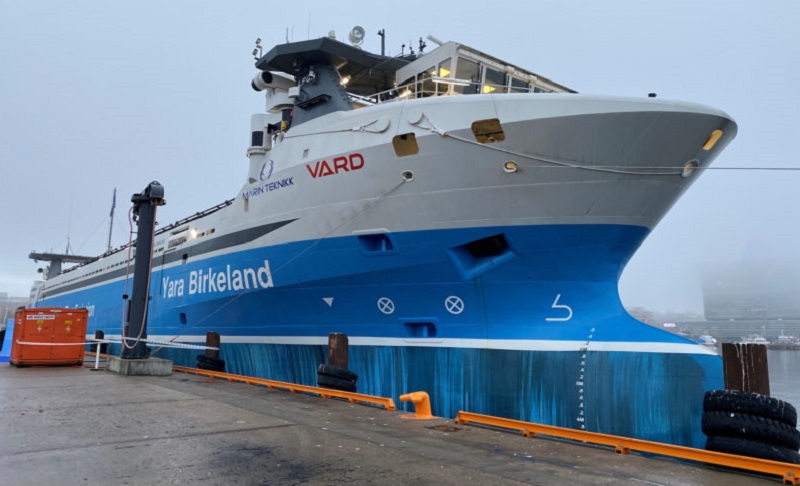OSLO: Zero emissions and, soon, zero crew: the world’s first fully-electric autonomous cargo vessel was unveiled in Norway, a small but promising step toward reducing the maritime industry’s climate footprint.
By shipping up to 120 containers of fertilizer from a plant in the southeastern town of Porsgrunn to the Brevik port a dozen kilometers (about eight miles) away, the much-delayed Yara Birkeland, shown off to the media on Friday, will eliminate the need for around 40,000 truck journeys a year that are now fuelled by polluting diesel.
“Of course, there have been difficulties and setbacks,” said Svein Tore Holsether, chief executive of Norwegian fertilizer giant Yara.
“But then it feels even more rewarding to stand here today in front this ship and see that we were able to do it,” he said, with the sleek blue-and-white vessel moored behind him in an Oslo dock, where it had been sailed for the event.
The 80-meter, 3,200-deadweight tonnes ship will soon begin two years of working trials during which it will be fine-tuned to learn to maneuver on its own.
The wheelhouse could disappear altogether in “three, four or five years”, said Holsether, once the vessel makes its 7.5-nautical-mile trips on its own with the aid of sensors.
“Quite a lot of the incidents happening on vessels are due to human error, because of fatigue for instance,” project manager Jostein Braaten said from the possibly doomed bridge.
“Autonomous operating can enable a safe journey,” he said. While the distance the Yara Birkeland will cover may be short, it will face many obstacles.
It will have to navigate in a narrow fjord and sail under two bridges while managing currents and heavy traffic from merchant ships, pleasure craft and kayaks, before docking at one of Norway’s busiest ports.
Onboard the Yara Birkeland, the traditional machine room has been replaced by eight battery compartments, giving the vessel a capacity of 6.8 MWh — sourced from renewable hydroelectricity.
“That’s the equivalent of 100 Teslas,” says Braaten.
The maritime sector, which is responsible for almost three percent of all man-made emissions, aims to reduce its emissions by 40 percent by 2030 and 50 percent by 2050.


